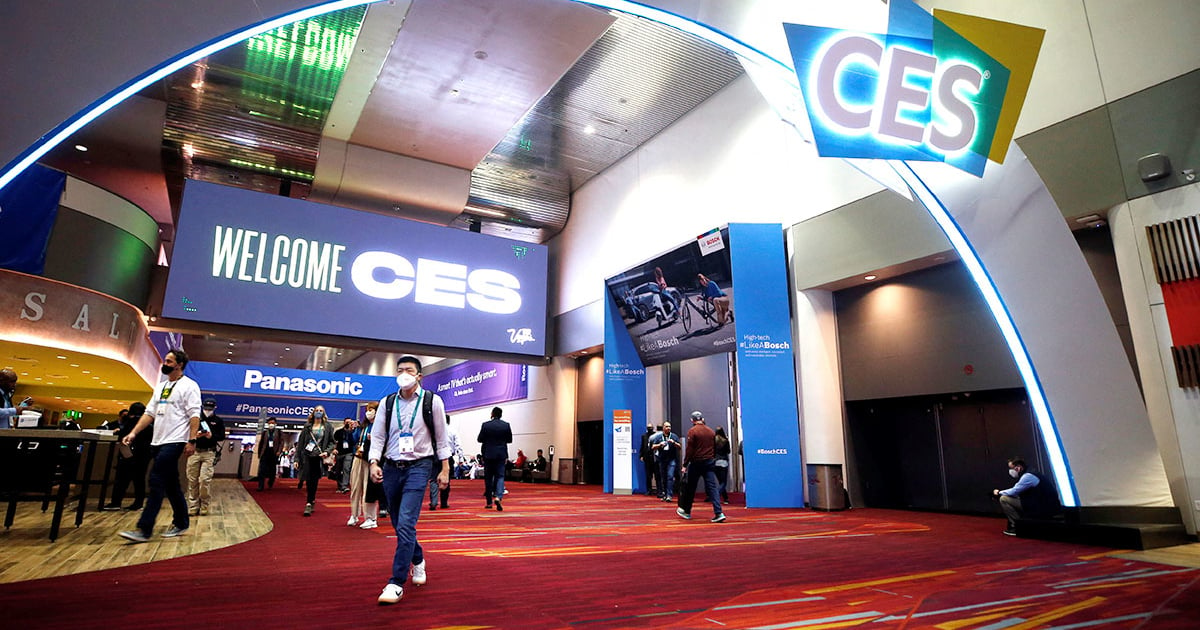
CES will again serve as a global showcase for the latest innovations in transportation, from scooters to space technology.
After a topsy-turvy two years in which COVID-19 stymied efforts to hold a large, fully in-person show, event organizers expect more than 100,000 attendees when CES kicks off Thursday, Jan. 5.
In Las Vegas, those visitors will find an emphasis on electric vehicles in particular and electrification overall. BMW and Stellantis will unveil EV concepts that underpin their production plans set in the not-too-distant future.
BMW will showcase its Neue Klasse next-generation platform, which it expects to build vehicles upon starting in 2025. Stellantis will highlight its Ram EV pickup, scheduled to launch in 2024. Both BMW CEO Oliver Zipse and Stellantis CEO Carlos Tavares are set to deliver keynote remarks.
Although technology displayed at CES often can feel like it borders on science fiction, the focus on cars that might soon resonate with consumers makes some sense, said Gary Shapiro, president of the Consumer Technology Association, which owns and operates CES.
“The price of oil has been a mess for a year now, and people are looking at electric vehicles as a more reasonable purchase against the backdrop of inflation,” he told Automotive News.
Of course, CES will feature its share of boundary-pushing vehicle technology. Lightyear, a Dutch company that makes solar-powered EVs, will showcase its second-generation vehicle, which it claims has about a 500-mile range and costs less than $40,000.
Not to be outdone, former Lightyear employees Robert Hoevers and Chris Klok formed their own solar-car company, Squad Mobility, which will unveil its own concept, featuring a swappable battery.
With the BMW and Stellantis unveilings, dueling Dutch solar vehicles, and scheduled press conferences from suppliers including Bosch, Continental and ZF Group, CES has all the makings of a European auto show. Rest assured, many elements are designed to appeal to the home crowd.
“Energy-generation storage and usage in one single product, offering independence and freedom,” Hoevers said about his car. “We believe that U.S. customers love that concept.”
Other aspects of CES are distinctly American. At least 150 federal officials and elected representatives are expected at the show, according to event organizers, including an 11-member delegation from the Congressional Black Caucus.
U.S. Energy Secretary Jennifer Granholm will speak Friday, Jan. 6. Her appearance comes as funding from the Infrastructure Investment and Jobs Act of 2021 has sparked investment in EV charging equipment and the Inflation Reduction Act, passed in August, has renewed focus on the domestic battery industry and battery materials.
Broadly, those policies spawn products. Charging and battery-related companies will be on hand at CES.
Government officials come to the expo to see “the promise of innovation solving global problems,” Shapiro said. “We’ve had presidents come and go, Republicans and Democrats, and we’ve never lost the support of high-ranking officials coming, and they see how important it is to the United States.”
EVs at CES will not be limited to traditional automobiles. Bosch will bring e-bikes. Aviation companies Ryse Aero Technologies and Aska will show electric vertical takeoff and landing aircraft. A half-dozen maritime companies, including startup Navier and established players such as Brunswick Corp., will appear.
Approximately 275 mobility-related companies were expected at the show as of Dec. 15, with organizers saying additions were anticipated.
Those companies had booked about 400,000 square feet of event space, 20 percent of the overall show.
Autonomous vehicles remain a staple of CES. While they may be upstaged by EVs this year, the show concludes Saturday, Jan. 7, with the Indy Autonomous Challenge at Las Vegas Motor Speedway. It will be the event’s second consecutive year as part of CES, with advances expected in both speed and complexity from the nine teams competing.
Race organizers say the cars are getting better at anticipating the movements of their competitors at high speeds, which eventually will help autonomous vehicles operating on public roads plan for the unexpected.
“That’s the value of what we’re doing, teaching cars to react to something they didn’t expect at very high speeds,” said Paul Mitchell, president of the Indy Autonomous Challenge. “Some of these technical advances are getting closer and closer to the kind of racing that human-driven race cars are able to achieve.”
For all the technical advances and achievements on display throughout CES, one of the most prominent innovations featured in 2023 might be one of the most basic.
CES has always been a nexus for business meetings. In the age of remote work and decentralized teams, it will now be a place where co-workers come together — in some cases, meeting for the first time.
“I hadn’t even thought about this until it came up at one of our board meetings,” Shapiro said. “But one of the advantages of CES and other events, especially since COVID, is that it actually gives companies an opportunity. There’s a lot of issues with onboarding staff and people working remotely. When they go to an event like CES, they really do bond.”